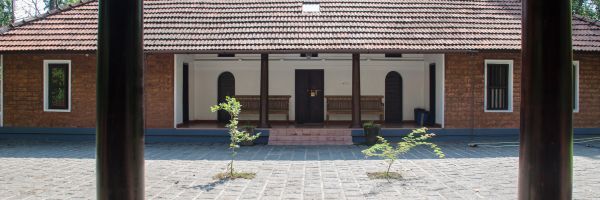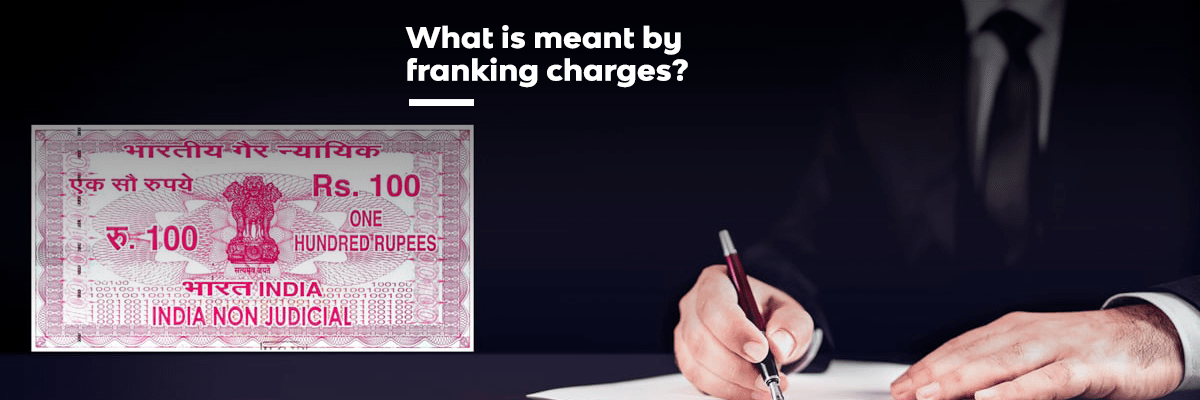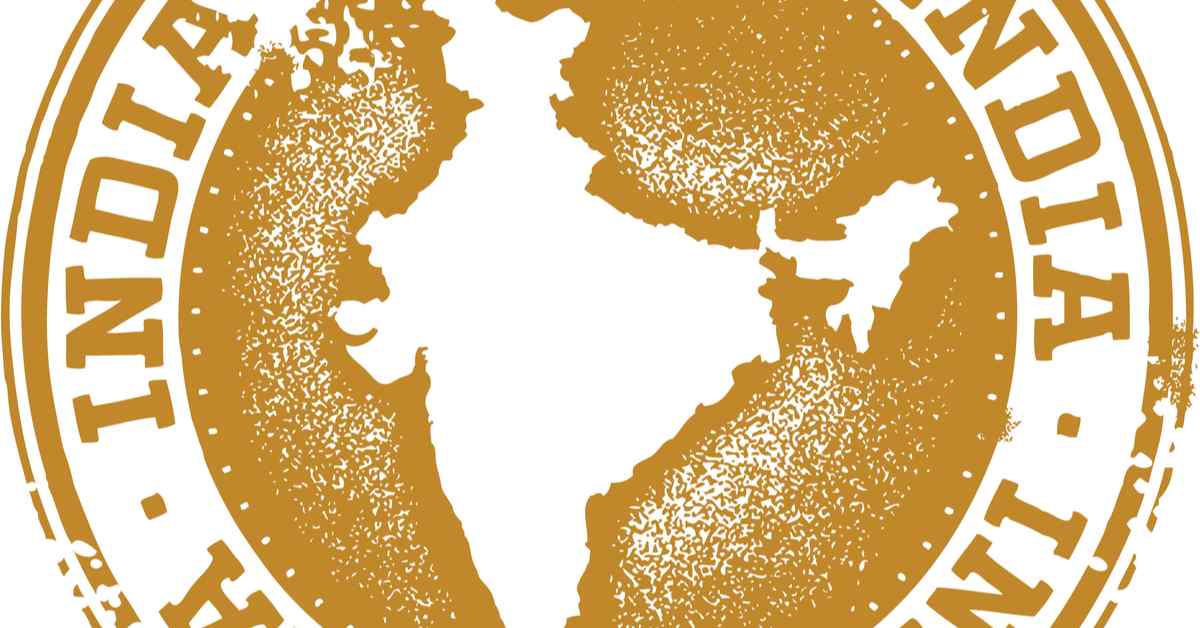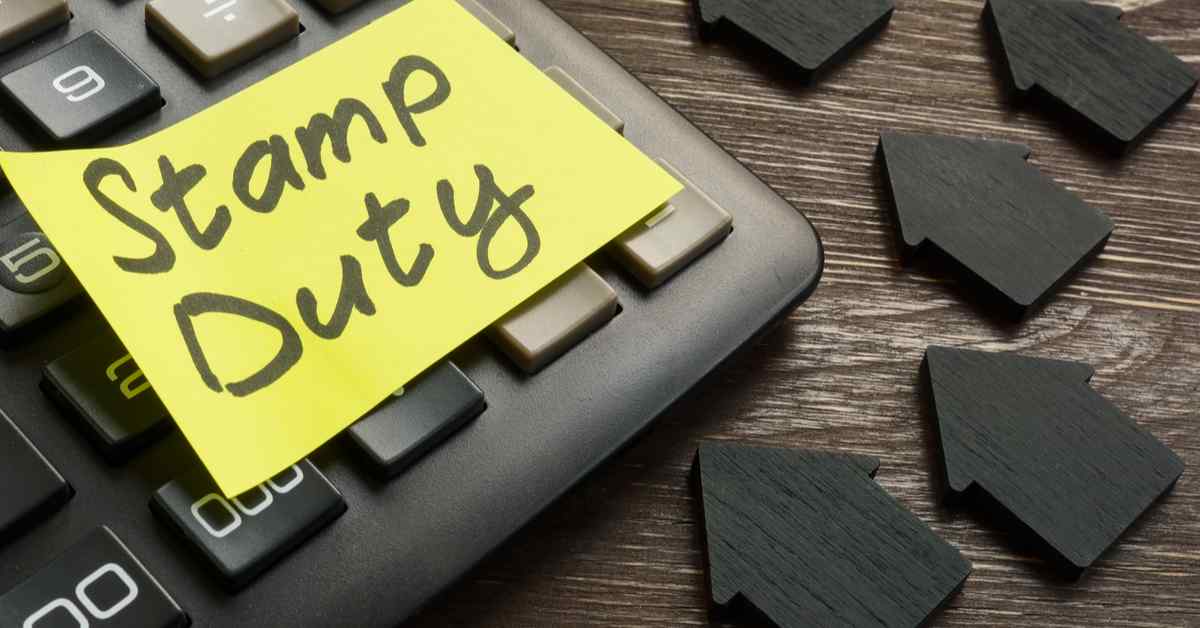Table of Contents
Quality Service Guarantee Or Painting Free

Get a rental agreement with doorstep delivery

Find the BEST deals and get unbelievable DISCOUNTS directly from builders!

5-Star rated painters, premium paints and services at the BEST PRICES!
Loved what you read? Share it with others!


Submit the Form to Unlock the Best Deals Today
Check Your Eligibility Instantly

Experience The NoBrokerHood Difference!
Set up a demo for the entire community

Tenant Super Relax Plan
Enjoy Hassle-Free Renting
 Full RM + FRM support
Full RM + FRM support Instant alerts & premium filters
Instant alerts & premium filters Rent negotiation & relocation help
Rent negotiation & relocation helpCERSAI: Full Form, Registration Process, Charges & Role in Financial Security for 2025
Table of Contents
CERSAI was created to curb fraudulent activities against equitable mortgages in lending transactions. CERSAI's full form is Central Registry of Securitisation, Asset Reconstruction and Security Interest of India. The government of India licenses the company under Section 8 of the Companies Act, 2013. It was created to detect and distinguish deceptive lending practices from fair home loans. Simply put, the organisation was created to prevent the behaviour of taking out several loans from different banks using the same resource. To learn more about CERSAI, read further.
CERSAI - Quick Info Table
| Information | More Details |
| CERSAI Full Form | Central Registry of Securitisation Asset Reconstruction and Security Interest of India |
| Established by | The Government of India |
| Established Date | March 31, 2011 |
| Established under | Securitisation and Reconstruction of Financial Assets and Enforcement of Security Interest Act, 2002 (SARFAESI Act) |
| Purpose | To prevent frauds done by taking multiple loans from various banks on the same property |
| Assets converted | Immovable assets like land, apartment, etc., movable assets like machinery, equipment, vehicles, and other tangible assets and intangible assets like patents, copyrights, royalties, etc. |
| Website | https://www.cersai.org.in |
| Who registers? | Banks, loan providers, and loan institutions |
| Why do this? | It helps banks verify credibility and helps buyers get transparency on the property they are looking to buy. |
| Who investigates? | In case of suspected fraud, government bodies like RBI, CERSAI itself (for registry-related frauds/errors), and law enforcement agencies investigate the case. |
| Penalty for Non-compliance | Penalty as prescribed under the SARFAESI Act and related regulations |
What is CERSAI?
As explained above, CERSAI was created to curb fraudulent activities. CERSAI means avoiding taking out several loans from the same source. For example, Mr X is taking loans from banks A, B and C. And what Mr X uses as a guarantee source is the same real estate property for all. Before CERSAI existed, proper registration of property transactions did not happen. All legal paperwork remained solely between the lender and the borrower/buyers.
This led to many fraudulent schemes - falsification of the original deed, selling a property with unpaid loans attached to it. CERSAI verification has made the registration system much safer and easier. The CERSAI Full form in banking is the Central Registry of Securitisation, Asset Reconstruction and Security Interest of India.
Quality Service Guarantee Or Painting Free

Get a rental agreement with doorstep delivery

Find the BEST deals and get unbelievable DISCOUNTS directly from builders!

5-Star rated painters, premium paints and services at the BEST PRICES!
The company has major stakeholders, mostly public-sector banks. While the Central Government of India has a major share in CERSAI, in March 2021, the RBI stated that it may pick up the 51% stake as it deals with the country's major finances. The remaining 49% of shares belong to state banks such as the State Bank of India and Punjab National Bank, and a major sum of shares belongs to the National Housing Bank.
Accessibility
For a charge, any bank, financial organisation, or individual can use CERSAI's registration platform. By registering with CERSAI, lenders can access information on an asset or property to see if any previous security interests (banks, financial institutions, etc.) have been created.
This is usually done before the borrower approves a loan. This is especially advantageous for legitimate property purchasers. CERSAI allows them to access all essential information from the registry to determine whether the property they are interested in is free of any liabilities incurred by another lender.
Recommended Reading

CERSAI: Full Form, Registration Process, Charges & Role in Financial Security for 2025
April 30, 2025
14786+ views

The Concept of Ancestral Property Acquisition Broken Down
January 31, 2025
14415+ views

What is a Legal Heir Certificate, and Why is it Important?
January 31, 2025
12985+ views

The Legal Implications Of The Difference Between Ancestral Property And Inherited Property In India
January 31, 2025
11973+ views

Importance and How to Apply for a Legal Heir Certificate in Delhi
January 31, 2025
6579+ views
Who owns CERSAI?
While the central government now owns most of the company, the CERSAI warned in March 2021 that the Reserve Bank of India (RBI) can buy the government's 51% ownership in the central registry. It is so because all of its duties are related to banking.
The remaining 49% of the CERSAI is owned by state-run lenders, including the State Bank of India, Punjab National Bank, Bank of Baroda, and the National Housing Bank.
CERSAI 2.0
- Clear your browser history before using CERSAI 2.0, the new version of the website.
- Use the URL https://cersai.org.in/CERSAI/home.prg and type it into the window's address bar.
- In the CERSAI 2.0 URL, omit the 'www'.
- If there is an existing saved CERSAI URL in the bookmark, remove it.
- Do not use search engines to find the CERSAI website.
CERSAI - Key Functions
CERSAI's tasks and activities primarily focus on banks, housing finance companies (HFCs), and non-banking financing companies (NBFCs). The central registry is responsible for the filing of security interests in immovable, movable, and intangible properties by lenders, among other things. Defined, the CERSAI login is an online database that contains all of India's mortgaged properties. The full form of CERSAI is the Central Registry of Securitisation, Asset Reconstruction, and Security Interest of India.
When taking out a loan, the borrower must pay a minor fee known as the CERSAI fee. According to CERSAI, if a borrower obtains a loan of more than 5 lakhs, he will be charged Rs. 100 plus service tax, while loans of less than 5 lakhs will be charged Rs. 50 plus service tax.
Since 2016, the CERSAI has also operated and maintained a Central KYC Record Registry (CKYCRR - CKYC CERSAI) to support RBI, SEBI, IRDAI, and PFRDA reporting organisations.
CERSAI holds all of the data for all security interests created for scheduled commercial banks since January 22, 2016. It has been maintaining the data for all other entities registered with it since July 1, 2016. CERSAI began registering data on security interests in under-construction properties in June 2017. (The CERSAI portal has all the information and is easy to use).
Main Objectives of CERSAI
- To combat suspicious and fraudulent activities, the main objective of establishing CERSAI is to maintain a centralized registry of fair and equitable mortgages.
- The CERSAI registration form contains all relevant information about mortgages or loans of goods or properties. In addition, it also contains all the relevant information about the bank or lender that approved the real estate loan, as well as information about the borrower.
- Allows banks and financial institutions to record any transaction related to the reconstruction and securitization of assets.
- In 2012, CERSAI expanded its scope to include the registration of any security interest created through factoring or the assignment of accounts receivable.
Recently, CERSAI’s objectives have been further expanded to include the registration of all types of mortgage loans that exist in India, as well as the registration of any collateral for non-tangible assets, such as accounting debts. According to the directive issued by the government, all lenders (banks, financial institutions, etc.) must register with CERSAI all information about the concrete guarantees that have been created. The registration must be completed within 30 days of the realization of the security interest.
CERSAI Registration Process
CERSAI registration procedure is fairly simple and can be completed by following a few steps.
- Go to the official CERSAI website - https://www.cersai.org.in/CERSAI/home.prg

- Entity Registration is in the main header bar.
- Next, you must complete the online registration form. The title 'Entity Registration' is on the main selection header.
- To complete the process, make sure you have an electronic signature or Central KYC Record Registry (CKYCRR). (This ensures timely work and is safe during the pandemic.)
- Now fill out the form and enter the information asked for.
- Print all the forms, cross-check the info and get it signed by the authorised signatory.
- Then these forms and the documents mentioned have to be sent to the CERSAI office.
CERSAI Registration Fee
CERSAI registration charges are minimal. CERSAI charges meaning that it is imposed for the registration of security interest. The charges range between Rs 50 to Rs 100, depending on the loan amount granted against the property.
CERSAI Charges on Home Loan
‘Memorandum of Deposit of the Deed Fee’ refers to the CERSAI charges on home loans. One important thing to remember is that this sum must be paid to CERSAI, whether a bank approves or rejects your loan enquiries. The CERSAI charge depends on various factors such as the size of the property, age of the property, etc.
What is a CERSAI Search?
The CERSAI search report is accessible to all to provide a corruption and fraud-free registration system. The CERSAI registry platform can be accessed by any bank, financial institution or individual, but a certain amount has to be paid. By doing so, the lender can obtain information about the property to ensure that it has no previous collateral that different lenders may have created in the past. Usually, this is done before the loan to the borrower is approved. Potential home/property buyers need to verify that the property they are interested in purchasing does not have any responsibilities or loans that other lenders or previous owners may create.
How Does the CERSAI Database Update Happen?
‘Registration of Charges’ is a process that compulsorily happens when a bank gives a loan to an individual for a pledged security against a property. The information about the transaction has to be given to the CERSAI database. It acts as a public database for the encumbrance of the property and its registration charges.
The banks are to send out this data within 30 days of the above-said transaction. If the bank fails to do so, monetary penalties are then charged to the bank.
CERSAI has been a great initiative to provide a fraudulent free system of updates on the mortgage of properties. The information remains secure and is also a safe way of making transactions of immovable, moveable, and tangible properties. Property buyers, while legalising their transactions, may have come across CERSAI, and the above article aims to offer the relevant information.
What is CERSAI in banking?
The Central Registry of Securitization Asset Reconstruction and Security Interest of India (CERSAI), plays a vital role in the banking sector. If you want to understand the CERSAI meaning, you should know that CERSAI is a central repository of information related to security interests created over the movable and immovable properties. The CERSAI asset based search portal provides detailed information on the security interest created over the assets of individuals, firms, and corporations. It helps banks, financial institutions, and other stakeholders to take informed decisions regarding the grant of loan or security.
What is the CERSAI Act?
The Central Registry of Securitization Asset Reconstruction and Security Interest of India (CERSAI) act was established in the year 2006.
- Preventing frauds and defaults: The CERSAI act provides for the central registration of security interests created on the assets financed by banks and financial institutions. The act is aimed at improving the transparency of the securitization and asset reconstruction market and to prevent fraud and defaults in these transactions.
- Is CERSAI registration mandatory?: The CERSAI act is applicable to all banks and financial institutions and it is mandatory for them to register all their security interests with the central registry. The act provides for the creation of a central database of all security interests created by banks and financial institutions, which makes CERSAI's applicability easier for the authorities to track and monitor the securitisation and asset reconstruction market.
- Fines and penalties: The CERSAI Act also provides for strict penalties for non-compliance with the provisions of the Act. Any individual or firm that fails to comply with the CERSAI rules may be fined or even face imprisonment, as per the provisions of the act.
Let's take a look at the key steps to perform an asset-based search on the CERSAI portal:
- Step 1: Visit the CERSAI website (https://cersai.org.in/)
- Step 2: Click on the “Asset-Based Search” tab on the homepage
- Step 3: Fill in the required details such as PAN number, name of the person, type of asset, and asset number
- Step 4: Review the search results and verify the CERSAI details for accuracy
- Step 5: Take a printout or save a copy of the search results for future reference
It's that simple! In just a few steps, you'll have access to detailed information on the security interest created over the assets of individuals, firms, or corporations. By performing an asset-based search on the CERSAI portal, you can make informed decisions regarding the grant of a loan or security.
While CERSAI is a vital tool for the banking sector, it is also mandatory for individuals and firms to register their assets on the portal within the specified CERSAI registration time limit. This is where NoBroker's real estate services come in handy. Our team of experts can help you navigate the complicated world of CERSAI registration and ensure that your assets are registered within the specified time limit.
Registering DSC on CERSAI – It’s time to get “Digital”!
The Central Registry of Securitization Asset Reconstruction and Security Interest of India (CERSAI) has made it mandatory for individuals and firms to register their assets on the portal. One of the key requirements for CERSAI registration is a Digital Signature Certificate (DSC). In this blog, we'll take a closer look at how to register DSC on CERSAI.
A Digital Signature Certificate (DSC) is an electronic security feature that authenticates the identity of the individual or firm. It is used to secure online transactions and is mandatory for CERSAI registration. Let's take a look at the key steps to register DSC on CERSAI:
- Get your DSC from a licensed certifying authority. There are several authorized certifying authorities in India that issue DSCs, including TCS, Sify, and MTNL.
- Once you have your DSC, log in to the CERSAI portal using your username and password.
- Go to the “DSC” tab on the homepage and click on “Register DSC”.
- Upload the necessary documents along with your DSC. These documents include proof of identity, proof of address, and a certificate of incorporation (for firms).
- After uploading the documents, click on “submit”. Your DSC registration will be processed within a few working days.
It is important to note that the DSC should be registered under the name of the authorised signatory of the individual or firm. Moreover, the DSC should be valid for at least one year from the registration date on CERSAI.
Registering your DSC on CERSAI is a simple process. The portal is user-friendly, and the steps to register DSC are clearly explained. With the help of NoBroker, you can easily navigate the CERSAI portal and make the most of its benefits. By registering your assets on CERSAI, you can ensure that they are secure and protected. Are you looking for a home and want help with the legalities that arise with it? NoBroker is here to help you and offer you the best service. Click on the link to get the assistance you need.
Frequently Asked Questions
Ans. CERSAI stands for Central Registry of Securitisation, Asset Reconstruction and Security Interest of India.
Ans. Yes, anyone can access the CERSAI search for property-related mortgage issues.
Ans. Yes, a sum of Rs 10 is charged for each search.
Ans. CERSAI does have an official website - https://www.cersai.org.in/CERSAI/home.prg
Ans. A digital signature is necessary for online registration, but you can also use the Central KYC Record Registry (CKYCRR) instead. But either of the ones is a must-have.
Loved what you read? Share it with others!
Most Viewed Articles

Franking Charges Explained: Meaning and Benefits
January 31, 2025
1103114+ views

BBMP E-Khata Registration process for property owners in Bangalore, Karnataka in 2025
March 19, 2025
145603+ views

Supreme Court Verdict on Society Maintenance Charges
January 31, 2025
128778+ views

Revenue Stamp in India: Meaning, Types, Uses, Legal Value & Where to Buy in 2025
January 31, 2025
94706+ views

Stamp Duty and Registration Charges in Bangalore in 2025
January 23, 2025
91935+ views
Recent blogs in
Rectification Deed Charges in Andhra Pradesh: Fees, Stamp Duty, Documents & Process in 2025
June 20, 2025 by Kruthi
Rectification Deed Charges in Maharashtra: Registration, Fees, Documents and Stamp Duty in 2025
June 20, 2025 by Kruthi
Rectification Deed Charges in Telangana: Regiteration, Fees, Documents and Stamp Duty in 2025
June 20, 2025 by Kruthi





Join the conversation!